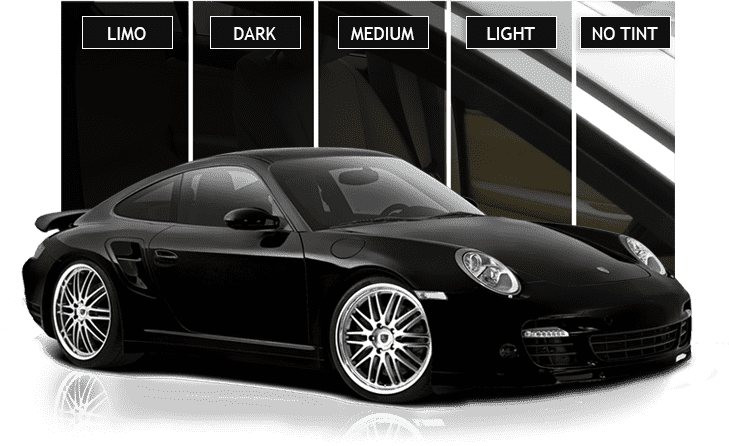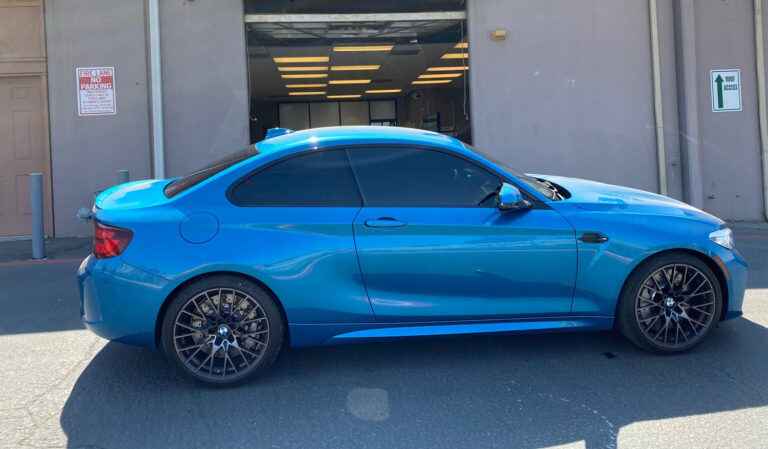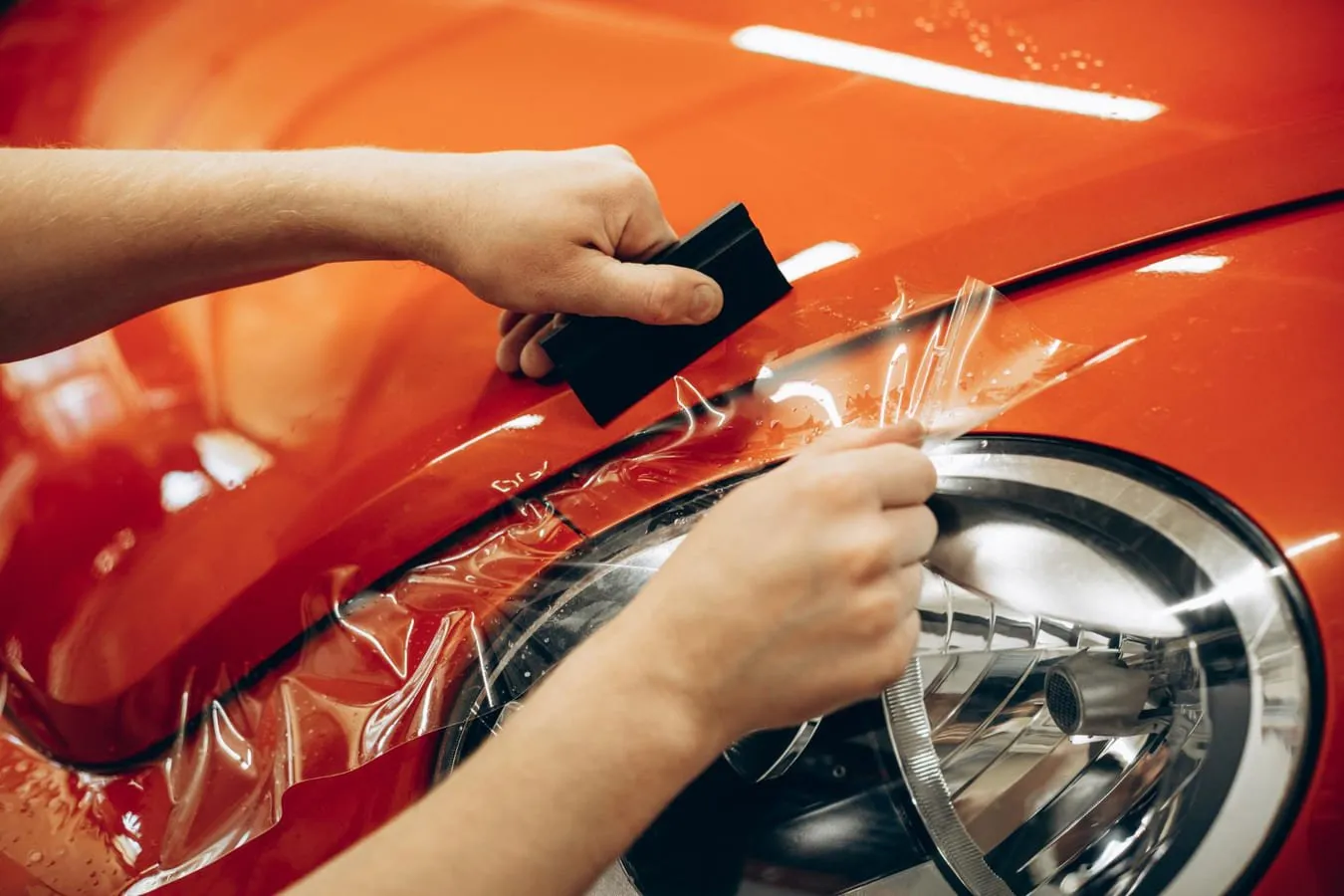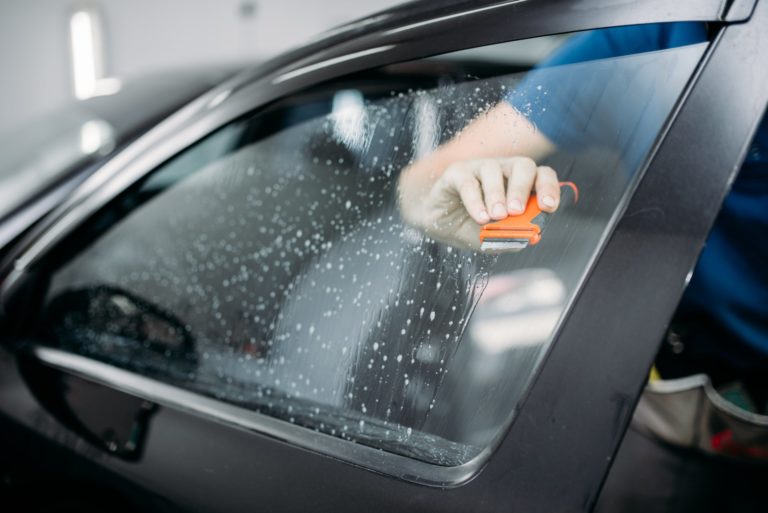Getting your car’s windows tinted can significantly improve your driving experience by enhancing privacy, reducing interior heat, and protecting against the sun’s harsh UV rays. However, like many components in your vehicle, time will eventually take a toll on your window tint, necessitating replacement. The challenge lies in determining when it’s time to replace your car’s window tint.
Unfortunately, there’s no fixed rule for the lifespan of window tint, as various factors, such as sunlight exposure, environmental conditions, tint quality, and maintenance, all contribute to its durability. Fortunately, indications of aging will likely become apparent when it’s time for replacement.
Recognizing Signs for Car Window Tint Replacement
Various indicators suggest that it’s time to consider replacing the tint on your car windows. Let’s explore some of the most common signs:
Formation of Bubble Pockets
One unmistakable sign that your car’s tint requires replacement is the appearance of air bubbles between the glass and the tint film. Bubbling often results from the use of poor-quality film and may manifest shortly after installation. It can also occur if the windows were not adequately cleaned before tint application, trapping contaminants between the glass and tint film. These trapped particles create air pockets that expand when exposed to sunlight. Beyond being unsightly, bubbles can significantly undermine the performance of your tint, leading to additional problems. Prompt replacement is advisable when bubbles surface. For recently tinted windows, check if the installation came with a warranty. Regardless, prioritize high-quality film for your next tint job, and inquire about the installer’s window surface preparation methods.
Peeling Edges of Tint Film
If the edges of your window tint film are peeling or curling away from the window, it signals the need for window tint replacement. Initially, tinting services apply a thin, even layer of adhesive to secure the film to the window. Over the years, exposure to heat and sunlight can break down the adhesive, causing the edges to peel. While this effect may be accelerated if the adhesive is poorly applied, it commonly occurs after several years of exposure. The peeling typically starts around the edges but can progress to large sections of the film detaching from the window.
Fading or Purple-Colored Tint
While old window tint often exhibits bubbling or peeling before changing color, the presence of fading or a purple hue signals the need for replacement. Premium window tint is less prone to fading or color changes. If you notice a faded appearance or a purple tint developing, it’s time for a replacement. Sun exposure is the primary culprit behind these symptoms. Keep an eye out for patches or streaks where the tint changes color, as fading and color alterations can impact visibility and should not be overlooked.
Scratches or Damage
When your car’s window tint displays scratches or other damage, its protective capabilities may be compromised. Scratches can create vulnerable points in the tint, increasing the risk of tearing or peeling.
The use of abrasive cleaning materials, like steel wool or rough sponges, is a common cause of scratches on window tint. It’s crucial to employ gentle cleaning products and soft cloths or towels when maintaining tinted windows.
Sharp objects such as keys, jewelry, or metallic items can inflict scratches or damage on window tint upon contact. Incorrect installation may render the tint more susceptible to scratches or damage due to an uneven surface or other issues.
Additionally, extreme weather conditions, including hail or heavy snowfall, can lead to scratches or damage to window tints if the windows are inadequately shielded.
Difficulty in Visibility
If your car’s window tint is excessively dark, it can impede clear vision while driving, particularly at night or in low-light conditions. This poses a safety hazard and may necessitate replacing the tint with a lighter shade.
Other factors can also contribute to visibility challenges. Window tinting is available in various darkness levels or “shades.” If the tint proves too dark for your eyes, it can hinder transparency through the window.
Depending on the sunlight’s angle, it may reflect off the window, making it more challenging to see through the tint. This effect can be heightened when the window is at a steep angle or directly facing the sun.
Dirty or damaged windows, such as those with scratches or cracks, can further exacerbate visibility issues through the tint.
Legal Concerns
Depending on your state of residence, there might be regulations governing the darkness of your car’s window tint. Being pulled over with excessively dark tint could lead to a ticket or a mandate to remove it entirely.
Most regions have laws specifying the darkness of window tint, often conveyed as a percentage of Visible Light Transmission (VLT). A lower percentage means a darker tint. It’s crucial to confirm that your tint adheres to the legal limits in your state or country.
Many states restrict or prohibit tint on the windshield or front side windows due to potential visibility reduction, especially at night.
Some areas regulate the level of reflectivity permitted in window tint, as highly reflective tints may be distracting to other drivers and cause glare.
Certain states may offer medical exemptions for individuals requiring darker window tints for health reasons. However, such exemptions usually demand a doctor’s prescription and may have specific guidelines.
Violating laws regarding window tint can result in fines or legal consequences, emphasizing the importance of ensuring compliance with legal limits to avoid any legal complications.
Window Operation Challenges
If the window tint hinders the smooth operation of the windows, making them challenging to roll down, it may be time for a replacement.
The window tint film might impede the window’s free movement, possibly due to excessive thickness or improper sizing. In such cases, adjusting or reinstalling the tint may be necessary.
Occasionally, the adhesive used in applying the tint film to the window can disrupt window movement, especially if applied too thickly or unevenly. In such instances, removing and reinstalling the tint with a different adhesive may be required.
Damage to the window regulator, the mechanical device controlling window movement, could occur during the tint installation process. This damage may result from excessive pressure applied to the window or the use of tools that harm the regulator. If this is the case, repairing or replacing the regulator may be necessary.
Why You Need Premium Window Tint Shades
Investing in the finest window tint can bring about a multitude of transformative benefits for any car owner. Whether you’re aiming for a stylish upgrade, seeking enhanced cooling during scorching summer months, or safeguarding your vehicle’s interior from sun-induced damage, a professionally installed window tint proves its immediate value. Some standout advantages include:
- Heat Protection: Engineered to block infrared radiation responsible for solar heat, window tinting ensures a cooler and more comfortable car interior. This not only enhances your driving experience but also offers energy-saving benefits by reducing the need for excessive air conditioning.
- UV Ray Blockage: Harmful UV rays pose various threats to both passengers and interior surfaces. Window tints effectively block UV rays, preventing sunburns and skin cancer risks for occupants and preserving your car’s upholstery, preventing fading, cracking, or warping.
- Glare Reduction: Direct sunlight while driving can lead to dangerous visibility issues. Glare-rejecting window films act as sunglasses for your car, diminishing glare and enhancing overall visibility, especially when driving toward the sun.
- Enhanced Aesthetics: Window tinting provides a sleek and visually appealing makeover to your car. The aesthetic appeal is a significant factor driving the popularity of window tinting.
- Increased Privacy: Tinted windows make it more challenging for external observers to peer into your car, granting you and your passengers enhanced privacy.
Given the plethora of shades and options available, selecting the right tint might seem overwhelming. Want to ensure compliance with legal requirements while meeting all your window tinting preferences? Tint City is here to assist, offering quality window film and expert advice to help you find the perfect fit for your needs.
Ready for a Change?
If you start noticing your car’s window tint showing signs of aging, it’s a good idea to think about getting it replaced. That way, you can keep your car protected from the sun’s strong UV rays. Feel free to give us a shout, and we can chat about getting that tint refreshed!




